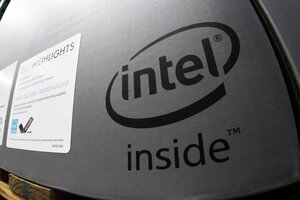
VLSI Tells Jury $3B Intel Case Hinges On Witness Credibility
Cara Salvatore, 20 April 2021
 Patent holder VLSI made its final argument Tuesday that Intel owes $3 billion for allegedly infringing chip-voltage-regulation technology, telling a Texas federal jury Intel’s witnesses contradicted themselves at moments they weren’t “getting the script right.”
Patent holder VLSI made its final argument Tuesday that Intel owes $3 billion for allegedly infringing chip-voltage-regulation technology, telling a Texas federal jury Intel’s witnesses contradicted themselves at moments they weren’t “getting the script right.”
In the second of three planned trials in the multipatent case, hedge-fund-owned VLSI has argued that Intel chip properties directly echoed two technologies invented by engineers at a company called Sigmatel around the year 2000. The patents are U.S. Patent Number 6,633,187, which covers “waking up” chip cores very quickly from power-saving idle states, and U.S. Patent Number 6,366,522, which covers regulating power draw while the cores are awake.
VLSI lawyer Morgan Chu told the jury in closing arguments Tuesday morning that the case will come down to the jury’s assessment of credibility because the two parties “seem to have opposite points of view on most of the key technical questions.” Chu accused Intel’s witnesses of changing their answers when they were on the hot seat.
“They testified one way on direct examination, when the questions were being asked by Intel’s lawyers,” Chu said. “So they have a script, and they’re getting the script right on direct examination, but it’s a little more difficult on cross-examination, when there’s no script.”
Chu said Intel engineer Jonathan Douglas, who was involved in developing the company’s independently invented on-chip voltage-regulation technology, flip-flopped on a question about whether input voltage was necessary for the establishment of a low-power or no-power state called “c6.”
Intel lawyer William Lee said these contentions by VLSI were themselves disingenuous.

